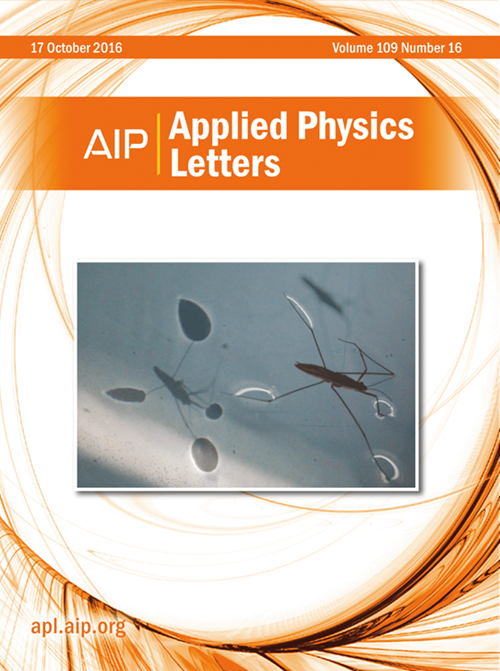Femtosecond laser-plasmon interference lithography for self-organization of extremely regular nanogratings with tunable periodicity
IF 3.5
2区 物理与天体物理
Q2 PHYSICS, APPLIED
引用次数: 0
Abstract
Achieving laser-induced periodic surface structures with both excellent regularity and high tunability is a challenging task. In this study, we address this challenge by utilizing a hybrid film structure, comprising an amorphous silicon coating on a copper film, to create periodic structures through a photochemical reaction induced by laser-plasmon interference. Our experiments, corroborated by numerical simulations, demonstrate a significant decrease in structural periodicity from 1020 to 750 nm with an increase in silicon film thickness from 15 to 70 nm. This corresponds to a tuning sensitivity of 4.6 ± 0.28, which is an order of magnitude higher than that of previously reported single-layer films. This substantial tunability is due to the high refractive index of silicon, where even slight thickness variations significantly alter the effective refractive index near the metal surface, thereby modulating the plasmonic wavelength. Additionally, we investigated the influence of laser pulse durations and repetition rates on laser-induced periodic surface structure periodicity and found them to have negligible effects.求助全文
约1分钟内获得全文
求助全文
来源期刊

Applied Physics Letters
物理-物理:应用
CiteScore
6.40
自引率
10.00%
发文量
1821
审稿时长
1.6 months
期刊介绍:
Applied Physics Letters (APL) features concise, up-to-date reports on significant new findings in applied physics. Emphasizing rapid dissemination of key data and new physical insights, APL offers prompt publication of new experimental and theoretical papers reporting applications of physics phenomena to all branches of science, engineering, and modern technology.
In addition to regular articles, the journal also publishes invited Fast Track, Perspectives, and in-depth Editorials which report on cutting-edge areas in applied physics.
APL Perspectives are forward-looking invited letters which highlight recent developments or discoveries. Emphasis is placed on very recent developments, potentially disruptive technologies, open questions and possible solutions. They also include a mini-roadmap detailing where the community should direct efforts in order for the phenomena to be viable for application and the challenges associated with meeting that performance threshold. Perspectives are characterized by personal viewpoints and opinions of recognized experts in the field.
Fast Track articles are invited original research articles that report results that are particularly novel and important or provide a significant advancement in an emerging field. Because of the urgency and scientific importance of the work, the peer review process is accelerated. If, during the review process, it becomes apparent that the paper does not meet the Fast Track criterion, it is returned to a normal track.
 求助内容:
求助内容: 应助结果提醒方式:
应助结果提醒方式:


